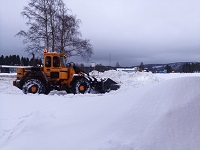2021-02 Oil Tank Removal
Late January and early February had been significantly cold with routine temperatures of -20C which was a first for us. We had never seen a winter this cold before moving to Sweden. The lowest we recorded this first year was -24C on the outside temperature sensor for the heating system.
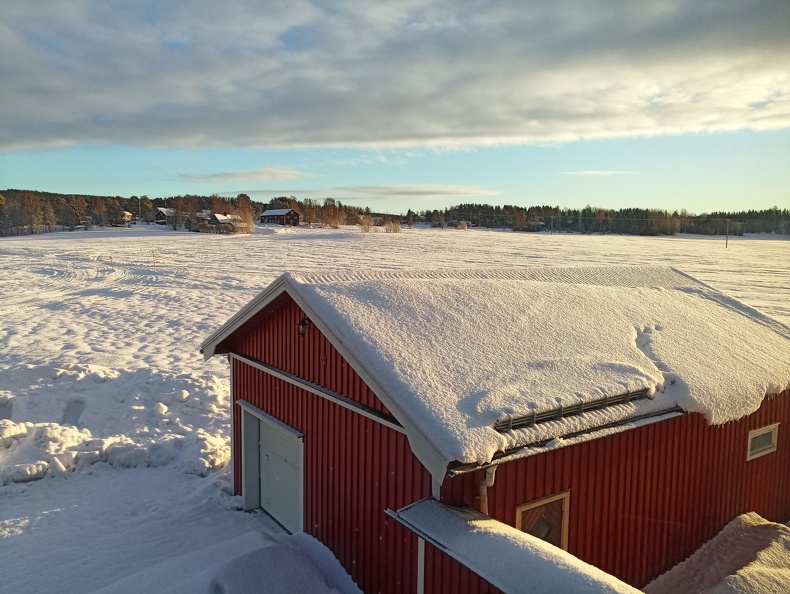
Basement Side Doors
There was a lot of cold outdoor air blowing into the basement through gaps around the loading side door. I also did not know how reliable the heating system would be. So to try and reduce heat loss, I set about making a new complementary inner door for the opening. I made the doors with a box structure and plywood skin on each side. I made a pressure-treated lumber frame as I wasn’t sure what moisture the doorframe was going to be exposed to in this location. For insulation, the doors used foam inside their box structure. To help seal I used fur strips top and bottom, and rubber seals on the vertical face. I then put a foil-faced bituminous pad on the outset facing side, to cut down the sound from the road. Getting the doors to fit well with the older style strap hinges was a challenge I hadn’t expected.
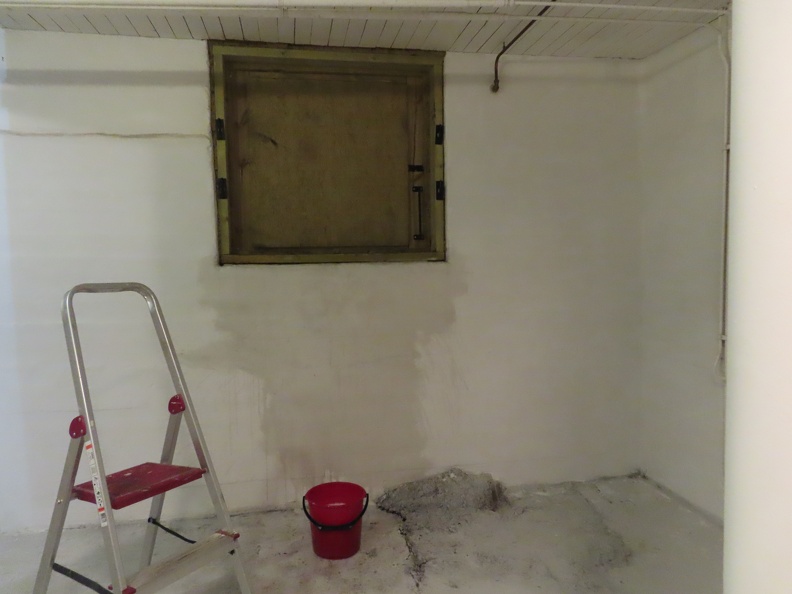
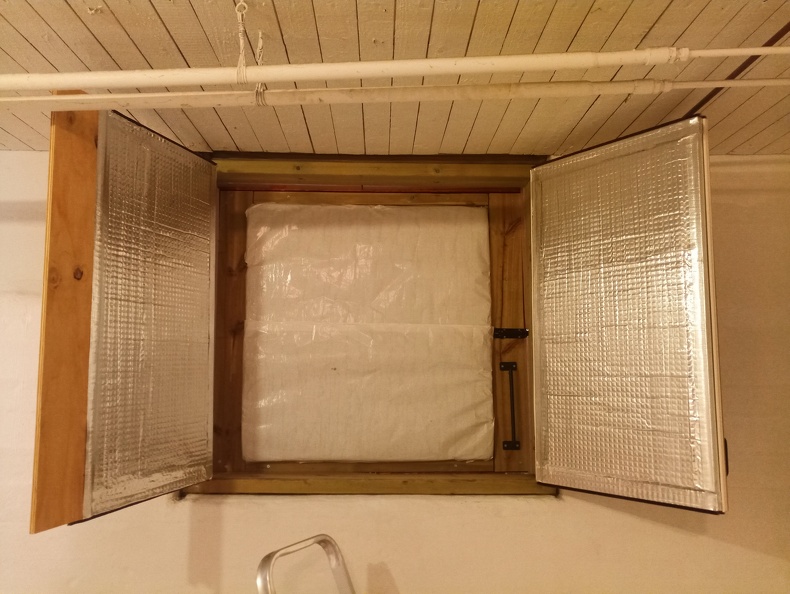
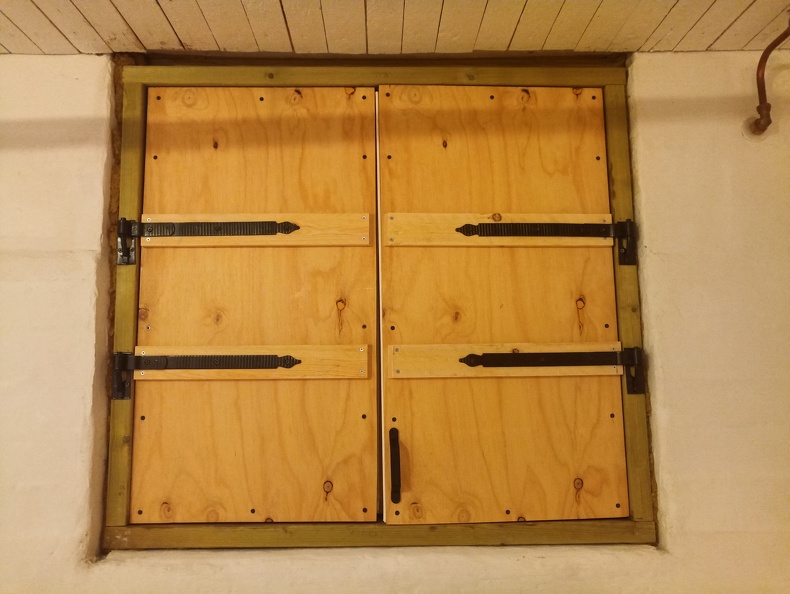
This reduced the cold airflow into the basement significantly, but in hindsight, I should have put in a heat recovery ventilator at the same time (HRV/ERV ) but we didn’t have the funds. As a result, although I reduced drafts into the basement, I suspect (from readings taken next winter) that radon levels in the basement would have increased from this point.
Old Heating Oil Tank and Burner Removal
This month we paid for the old oil heater tank in the basement to be removed. This is a gigantic steel tank that would have been filled from outside of the house. The tank would then feed heating oil to a burner in a nearby basement room. It was sticky and although no longer in use there was some kind of residue in it. There were also still lots of fumes. When the wind blew outside you would catch the smell of the oil fumes coming up through the house, which made me worry about the health implications. It also meant I couldn’t see what was happening to the basement wall in one corner of the house. My experience living on a boat was that if you can’t get to see an area, something bad might be happening there.
I contacted the local council and asked them who they knew of that did this work successfully in the past. The wording is important because a lot of times agencies cant be seen to be recommending someone. I got in contact with the company they suggested and a great big lorry arrived one morning.
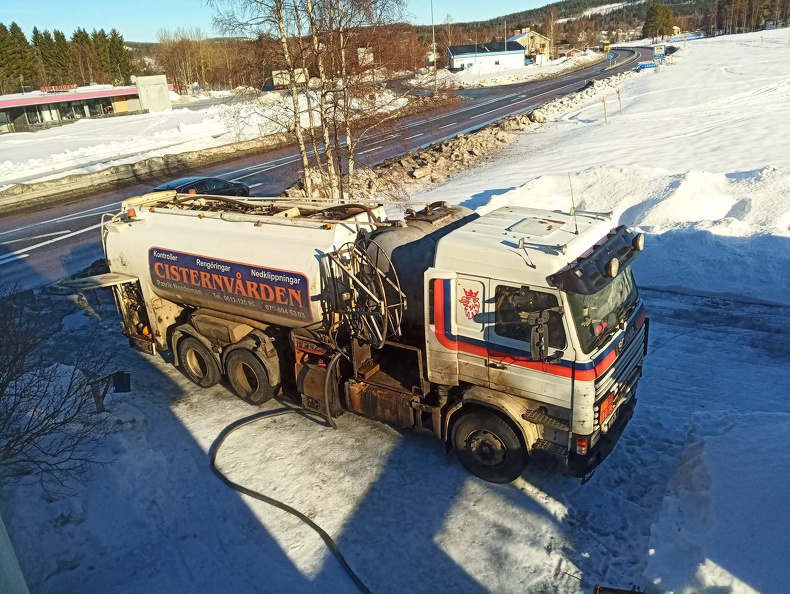
He worked all day. We had to work from home that day and he had to use chemicals that made your eyes sting two floors up. But it was great to finally have the tank and the burner removed. I was a bit worried about his health as he worked with oll the oil soot all day. He looked a bit apologetic about the mess but we were glad to see all the redundant equipment gone.
First Look at the Wall
I cleaned and inspected the wall that was now revealed. I worked on applying a layer of hard repair-cement product (Husfix) around the newly exposed wall. Notably part of the wall required attention. It seemed to have had a door created at some point. At a guess, perhaps to deliver firewood. It had then been filled in with what looked to be a too-sandy mix of concrete.
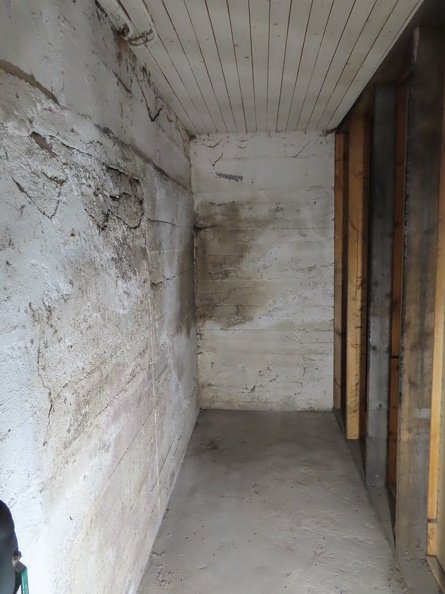
Basement Cabinets Repainted
I took down the basement wall cabinets so I could see and repair any problems with the wall behind. There were no cracks or similar and I surfaced the wall. I repainted the cabinets and mounted them on a quick French cleat system in the garage. I used red so they looked like workshop cabinets. A plywood base and top on the floor cabinets, plus castors, made them look like tool cabinets.
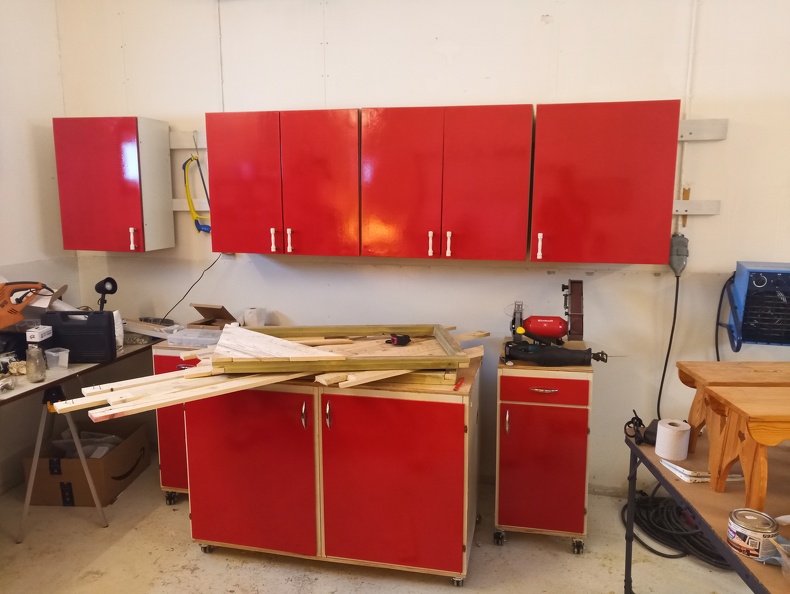
Summary
This was all good progress but it ate into the budget a lot. If I were to do this again, knowing what I know now, I would have paid for the tank removal but delayed other basement work until a heat/energy recovery ventilation system was in place.
